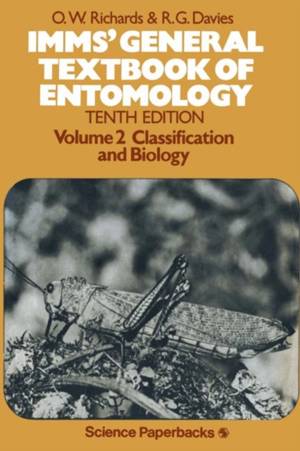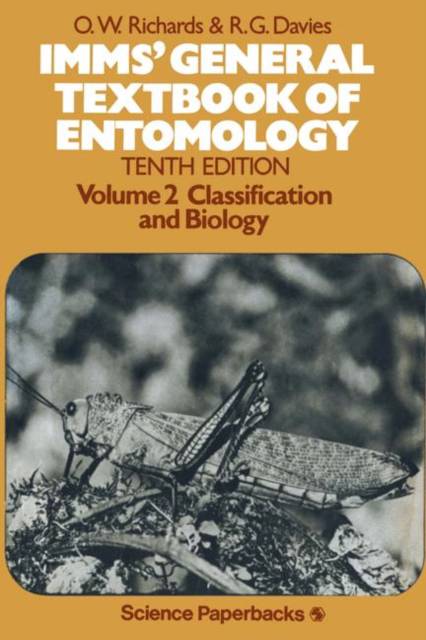
- Afhalen na 1 uur in een winkel met voorraad
- Gratis thuislevering in België vanaf € 30
- Ruim aanbod met 7 miljoen producten
- Afhalen na 1 uur in een winkel met voorraad
- Gratis thuislevering in België vanaf € 30
- Ruim aanbod met 7 miljoen producten
Zoeken
Imms' General Textbook of Entomology
Volume 2: Classification and Biology
€ 167,95
+ 335 punten
Omschrijving
seem as appropriate now as the original balance was when Dr A. D. Imms' textbook was first published over fifty years ago. There are 35 new figures, all based on published illustrations, the sources of which are acknowledged in the captions. We are grateful to the authors concerned and also to Miss K. Priest of Messrs Chapman & Hall, who saved us from many errors and omissions, and to Mrs R. G. Davies for substantial help in preparing the bibliographies and checking references. O. W. R. London R. G. D. May 1976 Part III THEORDERSOFINSECTS THE CLASSIFICATION AND PHYLOGENY OFINSECTS The classification of insects has passed through many changes and with the growth of detailed knowledge an increasing number of orders has come to be recognized. Handlirsch (1908) and Wilson and Doner (1937) have reviewed the earlier attempts at classification, among which the schemes of Brauer (1885), Sharp (1899) and Borner (1904) did much to define the more distinctive recent orders. In 1908 Handlirsch published a more revolutionary system, incorporating recent and fossil forms, which gave the Collembola, Thysanura and Diplura the status of three independent Arthropodan classes and considered as separate orders such groups as the Sialoidea, Raphidioidea, Heteroptera and Homoptera. He also split up the old order Orthoptera, gave its components ordinal rank and regrouped them with some of the other orders into a subclass Orthopteroidea and another subclass Blattaeformia.
Specificaties
Betrokkenen
- Uitgeverij:
Inhoud
- Aantal bladzijden:
- 934
- Taal:
- Engels
- Reeks:
Eigenschappen
- Productcode (EAN):
- 9780412152306
- Verschijningsdatum:
- 10/11/1977
- Uitvoering:
- Paperback
- Formaat:
- Trade paperback (VS)
- Afmetingen:
- 156 mm x 234 mm
- Gewicht:
- 1297 g

Alleen bij Standaard Boekhandel
+ 335 punten op je klantenkaart van Standaard Boekhandel
Beoordelingen
We publiceren alleen reviews die voldoen aan de voorwaarden voor reviews. Bekijk onze voorwaarden voor reviews.










